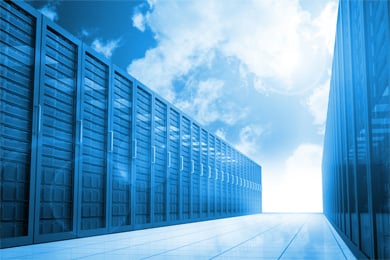Data centers are designed based heavily on TIA standards, one of which is the 4 tiers of up-time and reliability. With varying levels of redundancy, specifications and up-time, climbing to higher data center tiers can prove a costly investment but also a very rewarding one depending on the industry those data centers are supporting. While some companies take an approach of 'fixing' their data center whenever problems or considerations show themselves, many other companies have taken to a different mantra – 'building it'. There are a lot of design standards to consider when upgrading or building brand new, but whichever path your company takes, it could approach the design holistically for maximum performance.

To Fix It, Or To Build It - Design Standards To Consider
Redundancy vs Cost: Any company or network that requires high availability and mission-critical operations can benefit from data path redundancy. Network redundancy is essentially duplicating data paths between any and all locations in a data center so if any component suddenly fails, another pathway is open to maintain the communications flow. For industries that operate 24/7, have high storage & use, or in certain production applications redundant systems are especially essential. The cost will of course scale with the amount of redundancy needed for any given application.
Agility & Speed to Deploy: The ability to deploy a network quickly, whether for quick moving applications that migrate for business or simply for MAC work and everyday network deployments, is of utmost importance in markets today. The ability to access information in the cloud or to provide services and content has led to a greater dependance on digital services. Maintaining up-time and being able to rectify a problem quickly can make or break brands and customer trust.
Standardization & Industrialization: A seemingly endless array of options are available for every facet of a data center. Deciding between efficient standardization and niche specialties that can boost performance without sacrificing usability is paramount for every data center.
Modularization: It may seem a tempting proposition to design data centers and systems today for today's requirements, but this can lead to big pain points down the road. Planning for tomorrow with additional space, miniaturization of system components and minimizing of excess components allows for manageable spaces and incremental growth without threat of interruption or impediment of services.
Total Cost of Ownership vs Build Costs: Between going green, smart building designs and energy savings, the total cost of ownership versus building costs is becoming a much more heated argument in recent years. LED lighting has become an undeniable game changer, as has the impact of fiber in every implementation. Newer technologies may cost more initially up-front, but only a careful analysis of your companies implementation can ensure your energy savings strategy will be one that can ultimately pay for itself.
Performance vs Total Cost of Ownership: Sometimes the new technology doesn't offer immediate benefits over traditional choices. By taking into consideration future upgrades, MAC work and upcoming developments for the solution paths you choose, you can form a strategy to ultimately ensure operating costs are minimized and your solutions are future-proofed.
Energy Efficiency: As energy usage makes up a large portion of the operational costs for any data center, modern data center owners should be looking to every cooling, containment and reduction trend for ideas to make their data centers as efficient as possible. Geographical re-locating has been especially common in recent years, as data centers have been moved towards colder climates and around rivers and lakes to provide “free” ways of keeping temperature and energy costs down.
Owner/Operator vs Multi-Tenant: Continual replacement of aging infrastructure every 5 to 7 years has led many companies to outsource their data center needs to a third party. Multi-tenant data centers avoid the large capital expenditures necessary to upgrade and support aging infrastructure. This can be a good option for companies who want to leverage a MTDC's expertise and support instead of facing high operating costs and in-house support.



.png?width=58&height=58&name=X_logo_2023_(white).png)
